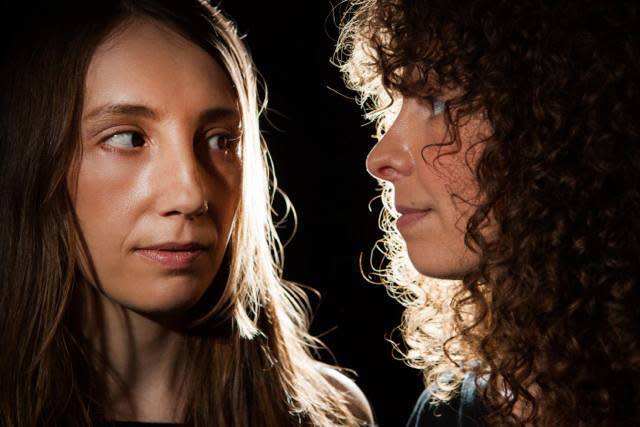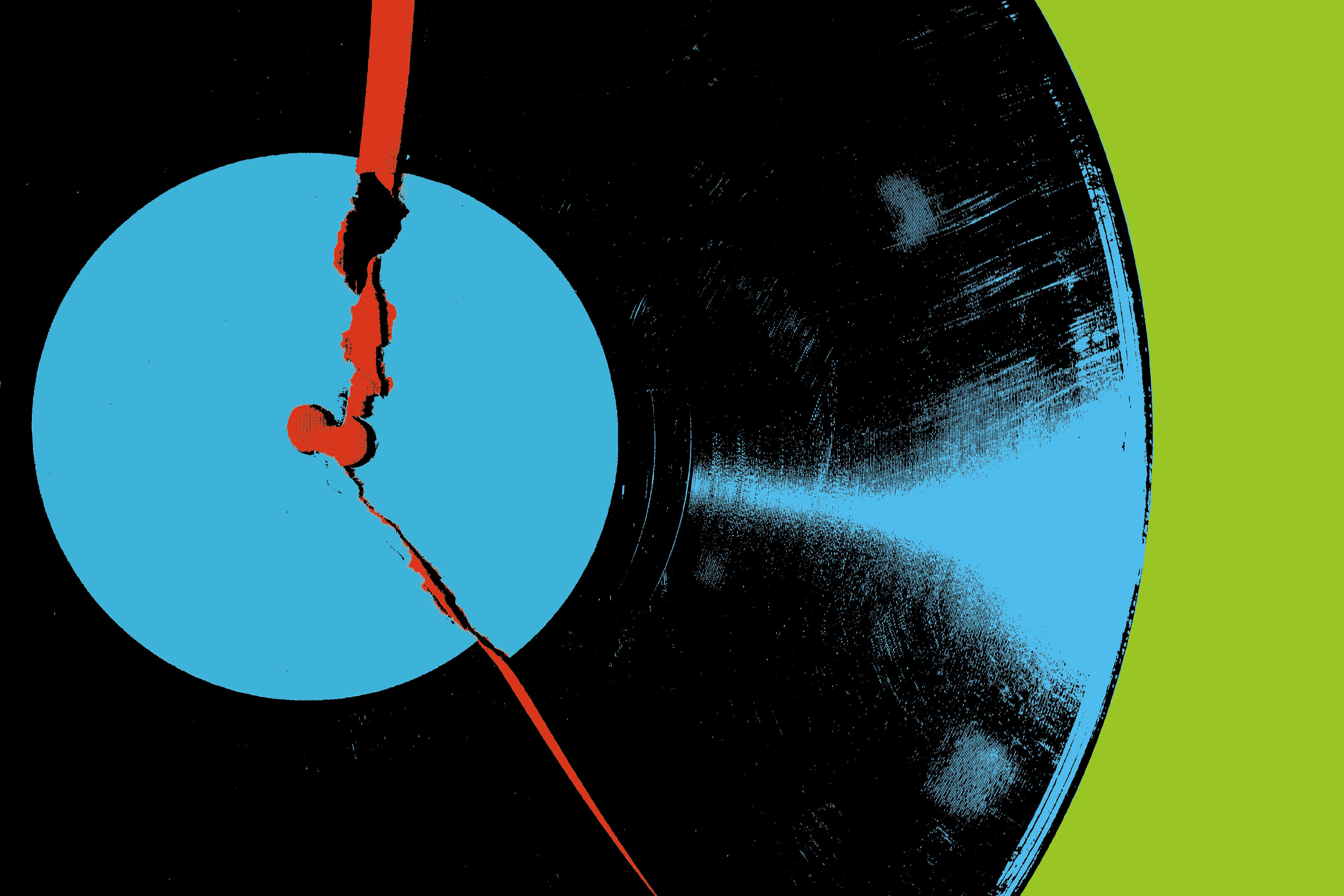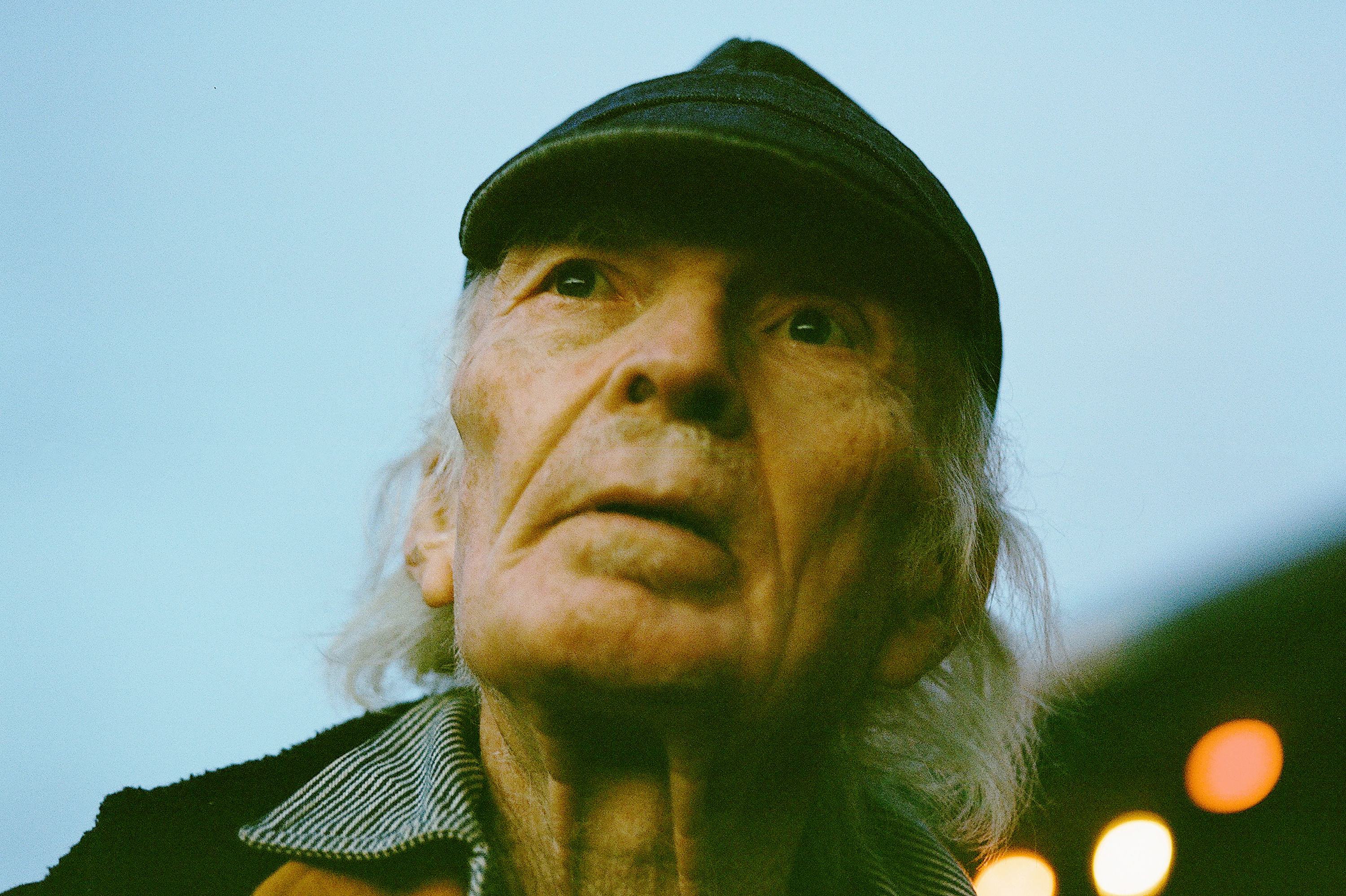Q&A: The Blow

“We Put It Together So We Could Take It Apart,” the title of the Blow’s Time-Based Art Festival performance, could also describe what the New York-via-Portland art-pop duo of Khaela Maricich and Melissa Dyne have been doing over the past two years as they wrote and recorded their new, self-titled album.
Maricich, first solo, then with YACHT’s Jona Bechtolt, has released five previous records of smart, quirky electropop under the the Blow name. Dyne, an installation artist (and Maricich’s longtime girlfriend) joined the group in 2009. The Blow has long made songs with a pop sensibility (their song “Fists Up” is a radio-ready anthem), but it wasn’t until the seven-year gap between 2006’s Paper Television and the new album that the pair started thinking critically about pop music. After creating and touring with a performance based on the concept that Maricich had been tapped by Lindsay Lohan to ghostwrite a pop record, they set out to write their own pop tunes—and succeeded so well, it scared them. “We said, ‘Oh my God, look what we made!’,” Dyne remembers. “‘That’s so clean! That’s so weird!’ We tipped it over and started over again.” But, like a visual artist who learns the rules so she can break them, making that first, curiously sterile pop album allowed them to make a pop album they could call their own: The Blow. “To deconstruct anything,” Dyne says, “you can’t lie about it. You have to be able to make We Put It Together So We Could Take It Apart
Sep 15–16 at 8:30
Winningstad Theatre
"Performing Pop" (talk)
Sep 13 at 12:30 pm
Portland Institute for Contemporary Art it—and with sincerity—in order to not make it.”
In the painstakingly designed performance the Blow will give at the Winningstad Theatre Sunday and Monday, the duo will continue their exploration of pop and identity, and at a talk they’ll give at the Portland Institute for Contemporary Art Friday, they’ll discuss the relationship between pop music and contemporary art. We talked with Maricich and Dyne about these issues, their TBA performance, the new album, and, inevitably, Lady Gaga.
What have you been up to while you’ve been back in Portland?
Melissa Dyne: Pretty much all we’ve been doing is rehearsing for the show. We’re rehearsing for TBA, but also for our tour, which is coming up. Just getting our shit together.
Khaela Maricich: We’ve been fighting the Portland urge to have coffee at two, then happy hour at four. The drinks are so cheap and so good.
You moved from here to New York in 2008. Why?
KM: We just decided we were going to go on a self-imposed residency, so we planned to be in New York for three months. I thought we were coming back. At one point, we were looking into getting a sublet there that would have lasted longer than we planned to be there, and I said, “Should we tell them we aren’t going to be there the whole time?”, and Melissa was like, “Maybe let’s just not tell them,” and I looked at her and realized: we’re never going back, are we?...In some ways, it’s easier to work in Portland, because there’s a sense of psychic and cultural privacy. You’re not bombarded by everybody else making everything else that’s intimidating and impressive all the time, so I’m able to get into my own groove and develop more of a sense of confidence. That said, I get really lazy, and I’m like, oh, well, there’s nothing to strive for. When we’re in New York, I see stuff where I’m like, ah, shit, I got to get on my game, ‘cause these people are working hard.
What should viewers expect from the TBA performance?
KM: We’re really excited about what happens when you take something from one context into another context. Rock venues shine a particular sort of light onto an object, and theater venues shine a totally different type of light onto it. A venue like the Winningstad Theatre just lets you have more space, lets you breathe; you could get totally silent and people would be less scared, and fidgety, and suddenly calling people on their phones.
MD: People are willing to go there with you, whereas if we were in a music venue, someone would yell something about your boobs.
So, no Lindsay Lohan?
KM: That was inspiration for writing some of the material, but as Melissa and I got into recording the album, I think the trappings of a fixed narrative like that started to fall apart.
MD: That was part of the journey of making the album: really considering, “what is a pop album?”, or, “what is a pop icon?”, and intellectually deconstructing that. Then, when we started making a record together, we started making a real pop record—we were not joking. Once we did, we were like, “Oh my God, look at what we made! That’s so clean! That’s so weird!” We tipped it over and started over again.
Why did that scare you?
KM: The way music gets marketed, the person who made the music is a major element of the marketing. You can be acting in pop—you can be acting in any performative art—but one doesn’t assume you’re doing that with music.
Your talk at PICA promises to be in part about “the place of pop music in contemporary art.” What is that place?
KM: If you’re a performance artist performing at a contemporary art center, there is a small population who will feel welcome and entitled to go to that event. And if you perform at a music venue, most people will feel safe and welcome to come. I think that is a thing contemporary art is both challenged by and kind of doesn’t want to let go of. We’re trying to traverse both worlds…[The conversation turns, inevitably, to Lady Gaga.] She seems excited about incorporating contemporary art into pop music. Our sense is that if you want to bridge those things, you have to make the art really good still. Like, Jay-Z rapped in a gallery for six hours straight, and it was like, OK, that’s cool, but is it good art? Is it smart? What’s it referencing? What are the layers? The conversation about that hasn’t been very developed; it’s enough to just take the music and be like, now it’s art, because we stuck it in the gallery.
Melissa, this album formally introduces you as a Blow member. What’s your background, and what’s your role in the group?
MD: Mostly, I’ve worked with large-scale museum shows. What the concept was is working with a medium—usually physics or engineering, so that could be light or sound—and an object. So, for the Museum of Contemporary Craft here, I took an 11-by-5-foot window pane from the New York Times building, put it on the museum wall, and just let it bend…When Khaela and I started working together during Paper Television, the question was, how do we install this album in this room? Because with electronic music, you have so much control. If you have a guitar and an amplifier, it’s like, this is the room you have. But when you have something that can come from anywhere, you can make a landscape that’s completely different. So, I started working with Khaela in that way.
Why was there such a long gap between Paper Television and the new album?
KM: I was more exposed than I had intended to be with Paper Television. I wasn’t like, “I want to go on two years of tour”; Jona and I were like, “Let’s make this for fun.” So, after that, I just wanted to be alone for a while without being watched—just kind of watching myself.
The new album sounds to me less restless and more settled than previous records. Where does that come from?
KM: Well, I’m happy, in love. Paper Television came in part out of having my heart gruesomely broken while living here, so that was a lot of anxiety and pain set to poppy background music. It’s a mystery to me how lyrics happen, so that part is subject to the Muses. You just go where you go, and then you’re like, oh, that’s where I went.




